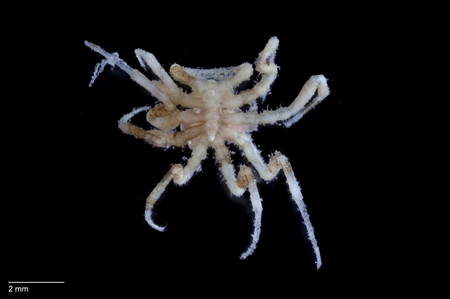Other Names
- Sea spider
General Description
Body with proboscis projecting outward from front, with the mouth at the tip. Central body (trunk) behind the proboscis, with a raised, rounded area (tubercle) bearing four eyes. Eight segmented walking legs attached to the sides of the trunk. Short abdomen behind trunk, unsegmented. Leg span about 1 cm
Biology
This species appears to be adopted to holding prey between its toothed chelae. They have been collected in low numbers of 1-2 individuals. Males carry the eggs, holding them between body parts called ovigers that hang under the animal.
Habitat
Usually in sediments rich in invertebrates such as polychaetes, to depth of 329 m.
Reefs
Soft substrates
Distribution guide
South-eastern Australia.
Species Group
Depth
Shallow (1-30 m)
Deep ( > 30 m)
Water Column
Max Size
1 cm
Commercial Species
No
Global Dispersal
Native to Australia
Conservation Status
- DSE Advisory List : Not listed
- EPBC Act 1999 : Not listed
- IUCN Red List : Not listed





